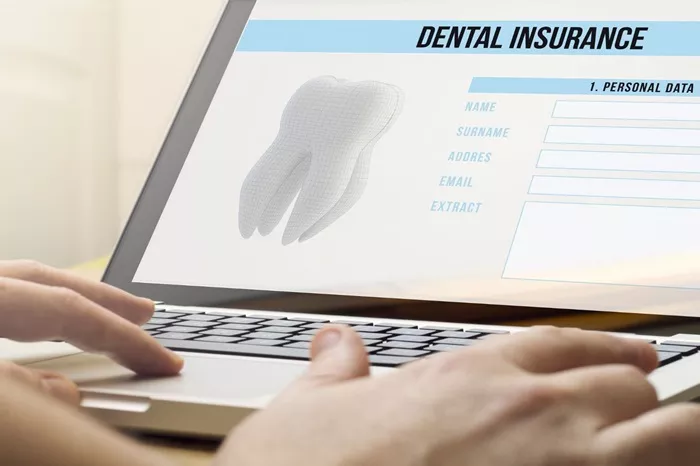When you purchase car insurance, one of the most important aspects to understand is how insurance companies pay out claims. Whether you’ve been in an accident, your car has been stolen, or it’s suffered damage from other covered events, knowing the ins and outs of the claims – payout process can help you navigate a potentially stressful situation more smoothly.
The Initial Claim Reporting Process
Contacting the Insurance Company
The first step in the claims – payout process is reporting the claim to your insurance company. This is typically done as soon as possible after the incident occurs. Most insurance companies have a 24/7 claims hotline that you can call to report the claim. Some also offer online claim – reporting options through their websites or mobile apps. When you report the claim, you’ll need to provide details such as the date, time, and location of the incident, a description of what happened, and information about any other parties involved (if applicable). For example, if you were in a car accident, you should provide the make, model, and license plate number of the other vehicle, as well as the contact and insurance information of the other driver.
Filing a Police Report (if necessary)
In many cases, especially for accidents involving another vehicle or significant damage, you’ll need to file a police report. This is important as it provides an official record of the incident and can be used by the insurance company to determine liability. If the police respond to the accident scene, they will typically file the report. However, if they don’t, you may need to visit the local police station to file one yourself. Make sure to get a copy of the police report, as you’ll likely need to provide it to your insurance company as part of the claim process. For example, in a hit – and – run accident, a police report can help the insurance company track down the other driver and establish liability.
The Claims Investigation Phase
Assignment of an Adjuster
Once you’ve reported the claim, the insurance company will assign an adjuster to your case. The adjuster is responsible for investigating the claim to determine the extent of the damage, who is at fault (in the case of an accident), and the appropriate amount of compensation. Adjusters are trained professionals who have experience in assessing vehicle damage, reviewing medical records (if there are injuries involved), and evaluating liability. They will typically contact you to schedule an inspection of the damaged vehicle, either at your location or at a repair shop.
Gathering Information
During the investigation, the adjuster will gather various types of information. This includes interviewing you and any witnesses to the incident, reviewing the police report, and obtaining repair estimates from auto body shops. If there are injuries involved, the adjuster may also request medical records and bills to assess the cost of treatment. For example, if you were injured in a car accident and are claiming medical expenses, the adjuster will want to see your hospital bills, doctor’s notes, and any other relevant medical documentation to determine the amount of compensation you’re entitled to.
Determining Liability
One of the key tasks of the adjuster is to determine liability. In a car accident, this means figuring out who was at fault for the collision. The adjuster will consider factors such as traffic laws, the actions of the drivers involved, and any evidence from the accident scene, such as skid marks or damage patterns on the vehicles. If it’s determined that you were at fault, your insurance company will typically cover the damages and injuries you caused to others (up to the limits of your policy), while if the other driver was at fault, their insurance company will be responsible for covering your losses. In some cases, liability may be shared between the parties, and the insurance companies will work out a proportionate settlement.
The (Damage Assessment) and Valuation Process
Inspecting the Vehicle
The adjuster will inspect the damaged vehicle to assess the extent of the damage. This may involve a physical inspection at the accident scene, if possible, or at a repair shop. The adjuster will look for visible damage to the body, frame, and mechanical components of the car. They may also use specialized tools and equipment to detect hidden damage, such as damage to the engine or electrical systems. For example, if your car was in a rear – end collision, the adjuster will check for damage to the bumper, trunk, and any internal components that may have been affected by the impact.
Obtaining Repair Estimates
After inspecting the vehicle, the adjuster will obtain repair estimates from auto body shops. They may have a network of preferred repair shops that they work with, or they may allow you to choose your own repair shop. The adjuster will provide the repair shop with details about the damage, and the shop will then provide an estimate for the cost of repairs. The adjuster will review these estimates to ensure they are reasonable and accurate. In some cases, if the damage is extensive or complex, the adjuster may obtain multiple estimates to compare costs.
Determining the Value of the Vehicle (in case of a total loss)
If the damage to your vehicle is so severe that it’s considered a total loss, the insurance company will need to determine the value of the vehicle. This is typically done by researching the make, model, year, mileage, and condition of your car, as well as comparing it to similar vehicles on the market. The insurance company may use industry – standard valuation tools or consult with vehicle appraisal experts. Once the value of the vehicle is determined, the insurance company will subtract any deductible you are responsible for and pay you the remaining amount. For example, if your car is valued at $10,000 and your deductible is $1,000, you’ll receive a payout of $9,000 if your car is declared a total loss.
The Claims Settlement and Payout
Negotiating the Settlement Amount
In some cases, there may be a negotiation process between you and the insurance company regarding the settlement amount. If you believe the repair estimates or the value of your vehicle determined by the insurance company is too low, you can provide additional evidence to support your claim. This could include invoices for recent repairs or upgrades to your car, or independent appraisals. The insurance company will review this additional information and may adjust the settlement amount accordingly. For example, if you recently installed a new set of high – performance tires on your car and the insurance company didn’t initially account for their value, you can provide the invoice to show the additional cost and potentially increase the settlement amount.
Types of Payouts
Once the settlement amount is agreed upon, the insurance company will issue a payout. There are several ways this can be done. In the case of vehicle repairs, the insurance company may pay the repair shop directly. This is a common practice, especially when you use one of the insurance company’s preferred repair shops. The insurance company will send a check or make an electronic payment to the repair shop for the approved amount of repairs. If you choose to receive the payout and handle the repairs yourself, the insurance company will issue a check to you. In the case of a total loss, the insurance company will typically issue a check to you for the agreed – upon value of the vehicle, minus the deductible. If there is a lienholder on your vehicle (such as a bank that holds the title because you have a car loan), the insurance company may issue the check jointly to you and the lienholder.
Timing of Payouts
The timing of the payout can vary depending on the complexity of the claim. For simple claims with clear liability and minimal damage, the payout may be issued within a few days to a week after the claim is approved. However, for more complex claims, such as those involving liability disputes or extensive damage, it can take several weeks or even months to reach a settlement and receive the payout. The insurance company is required to process claims in a timely manner, but factors such as the need for additional investigation, negotiations, or waiting for medical treatment to be completed can delay the process.
Special Considerations in Claims Payouts
Medical Payments Coverage
If your car insurance policy includes medical payments coverage, the insurance company will pay for your medical expenses (and those of your passengers) regardless of who was at fault in the accident. This coverage is designed to provide quick access to funds for medical treatment. The insurance company will typically pay the medical provider directly or reimburse you for out – of – pocket expenses up to the limits of your policy. For example, if you have a medical payments coverage limit of $5,000 and your medical bills from a car accident total $3,000, the insurance company will pay the full $3,000.
Rental Car Reimbursement
Many car insurance policies offer rental car reimbursement coverage. If your car is in the shop for repairs due to a covered claim, the insurance company will reimburse you for the cost of renting a replacement vehicle. The amount of reimbursement is typically based on a daily limit specified in your policy. For example, if your policy has a daily rental car reimbursement limit of $30 and your car is in the shop for 10 days, the insurance company will reimburse you up to $300 for the rental car.
Uninsured/Underinsured Motorist Coverage
If you’re involved in an accident with a driver who has no insurance or insufficient insurance to cover your damages, your uninsured/underinsured motorist coverage will kick in. The insurance company will pay for your damages and injuries, up to the limits of your policy. The claims – payout process for this type of coverage is similar to a regular claim, but the insurance company may need to take additional steps to prove that the other driver was uninsured or underinsured. For example, they may need to obtain a statement from the other driver’s insurance company confirming the lack of coverage.
Conclusion
Comprehensive car insurance is a valuable type of coverage that provides extensive protection for your vehicle. By understanding what it covers, its limits and exclusions, and how to choose the right policy, you can ensure that your car is adequately protected from a variety of non – collision risks. Whether you’re protecting your investment, seeking peace of mind, or meeting lender requirements, comprehensive car insurance offers a crucial layer of security. So, take the time to research, compare, and select a policy that meets your needs and gives you the confidence to drive knowing that your vehicle is well – protected.
Related topic:
ADVERTISEMENT
How Do Car Insurance Claims Work
ADVERTISEMENT
What To Do When Car Insurance Denies Claim
ADVERTISEMENT






















